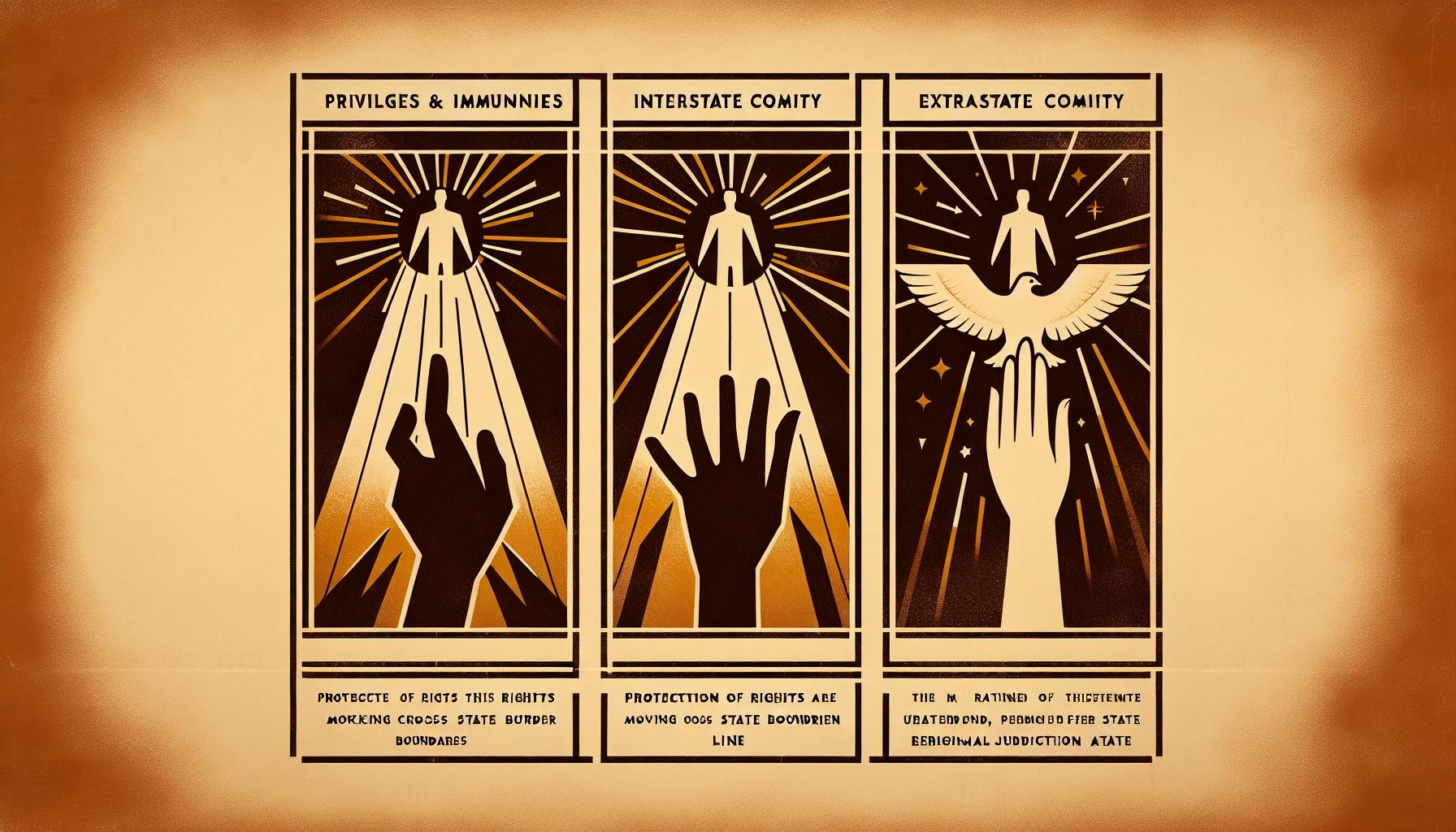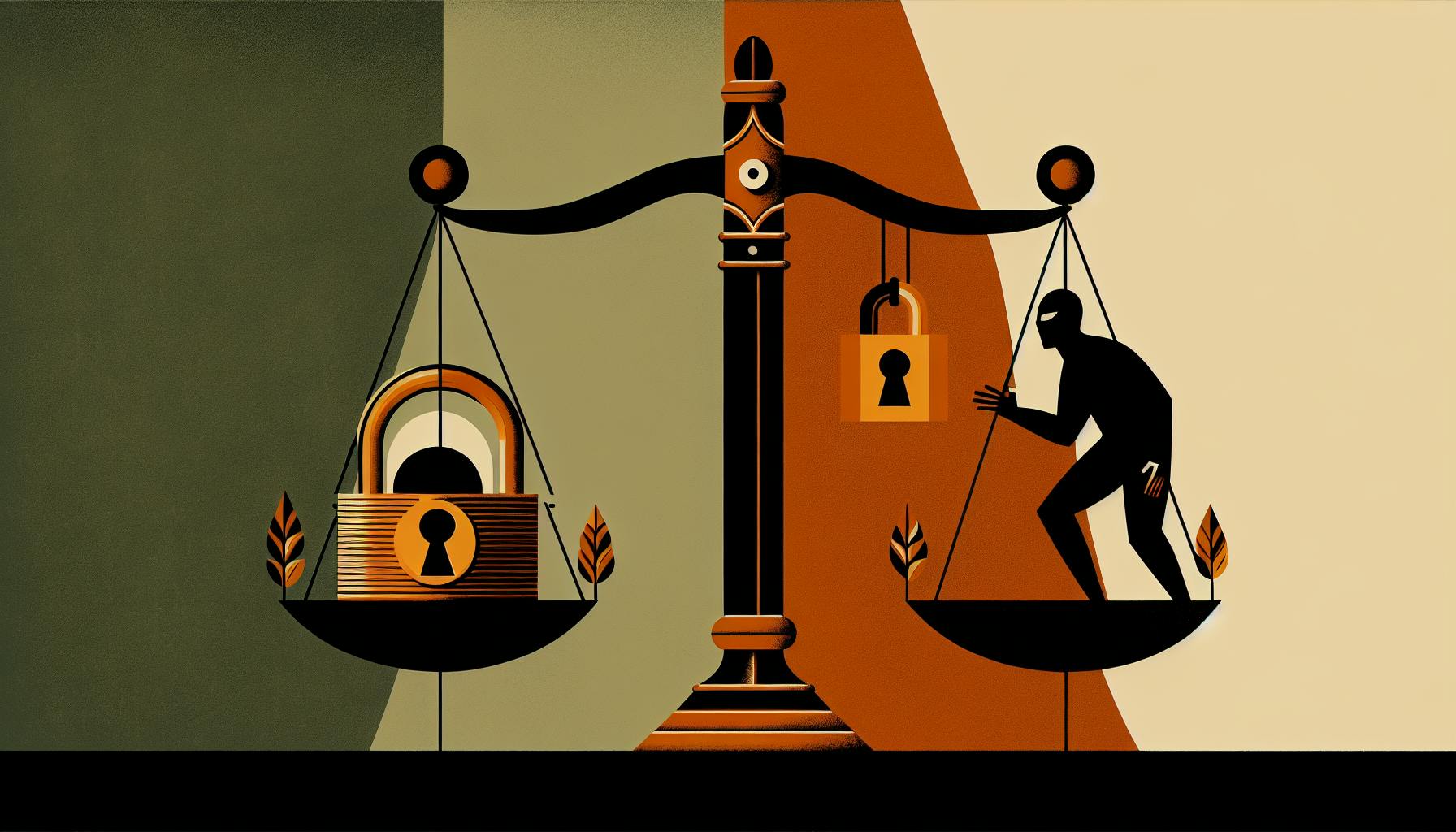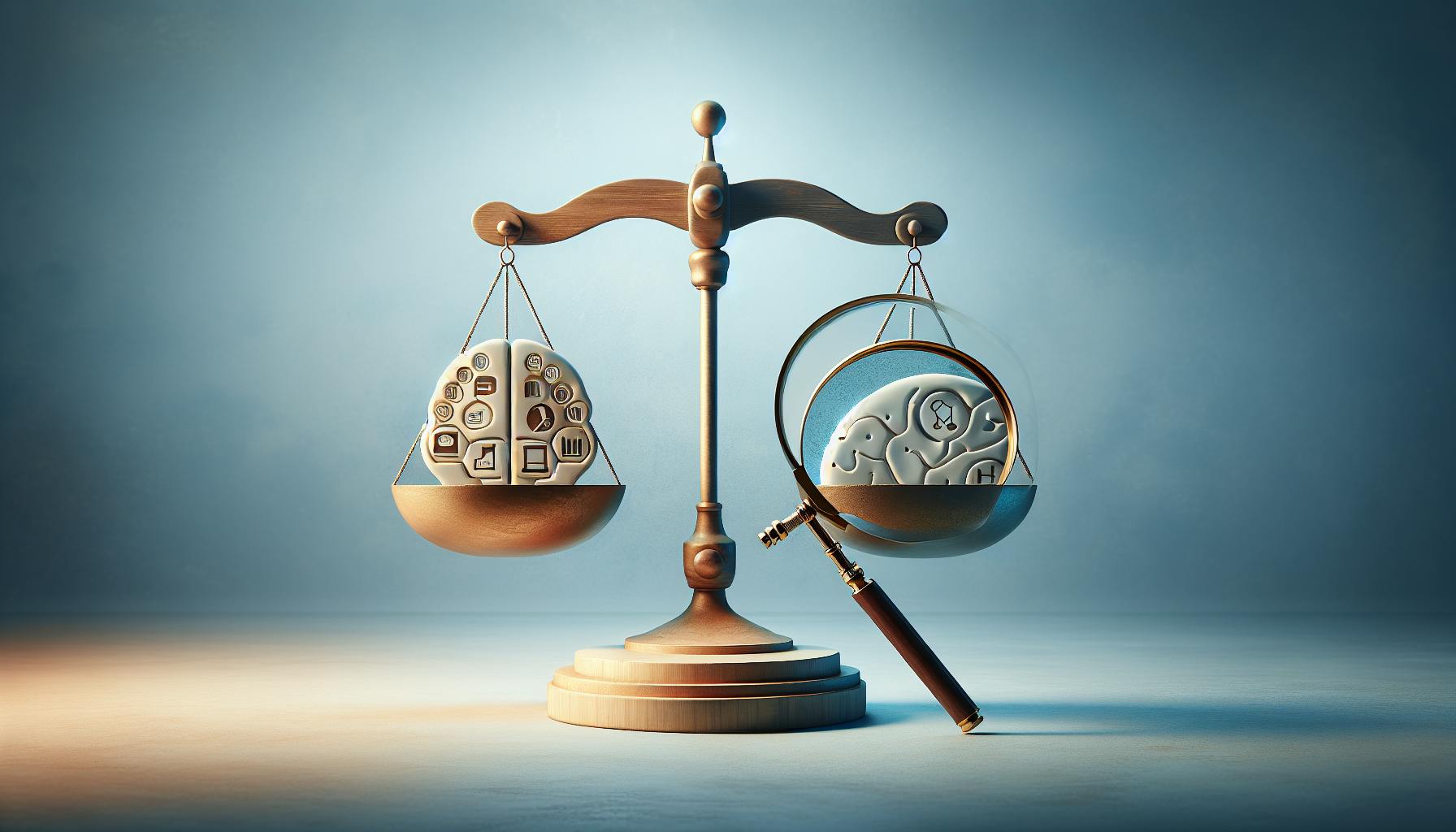Readers will likely agree it's important to understand laws that impact national security and civil liberties.
This article provides a straightforward explanation of the Espionage Act - from its origins to key Supreme Court cases to its use in contemporary times.
You'll gain essential knowledge of this complex law, including its intent, evolution, applications, and unresolved tensions with Constitutional rights.
Introduction to the Espionage Act: A Century of American Security Law
The Espionage Act of 1917 was passed during World War I to help protect national security and prevent espionage. This law made it a crime to interfere with military operations, to support enemies of the U.S., or to violate defense plans.
The act has had a complex history over the past century. It aimed to balance security concerns with civil liberties like free speech. However, it has often been controversial when used to prosecute leakers and whistleblowers.
Origins and Intent: Why Was the Espionage Act Passed?
The Espionage Act was passed in 1917, shortly after the U.S. entered WW1. There were concerns about sabotage and spying by foreign agents. The act made it illegal to obtain or share sensitive information to harm the U.S. or support an enemy.
It was intended to help safeguard military secrets and operations. There were also fears that anti-war movements would undermine the war effort. The law set fines and prison sentences for spying, sabotage, or dissent.
Espionage Act of 1917 Text: The Legal Framework
The original text defines espionage and other national security offenses. It covers areas like obtaining or sharing defense plans illegally, spying on military installations, or interfering with recruitment and the draft.
Offenses under the act carry fines up to $10,000 and prison sentences up to 20 years. It also gave mail carriers more authority to intercept messages related to illegal activities.
The law has been amended over time. For example, the Sedition Act of 1918 made it further illegal to criticize the government or military during wartime.
Is the Espionage Act Still in Effect? Its Modern Iteration
The Espionage Act remains in effect today in an updated form. It is still an important part of national security law. The law now covers newer threats like cyber attacks and terrorism.
Over the decades, it has continued to create tension with civil liberties. The government has used the act to prosecute whistleblowers who leak classified information to the media. This has raised First Amendment concerns.
The Espionage Act and the First Amendment: Balancing National Security and Free Speech
There have been many high-profile cases involving the Espionage Act and free speech issues. The law can conflict with constitutional rights like freedom of expression.
Some cases have involved the publication of classified information, like the Pentagon Papers case during the Vietnam War era. Other cases have involved prosecuting government employees for leaking secrets.
Opponents argue the law is overbroad and chills free speech. But the courts have largely upheld the act as constitutional. They have said it serves a compelling interest in protecting national defense information. Still, there are calls to update the law for the modern era.
What is the Espionage Act in simple terms?
The Espionage Act of 1917 is a federal law that criminalizes certain activities related to national defense information. In simple terms, it makes it illegal to:
-
Obtain, copy, or transmit national defense information with intent or reason to believe it will harm the United States or aid a foreign nation. This includes information related to military weapons, operations, or signals intelligence.
-
Receive or retain national defense information knowing it could be used to harm the United States or aid a foreign nation.
-
Attempt or conspire to commit espionage.
The law was passed during World War I to crack down on spying, interference with military operations, and support for enemies. It remains in effect today in an updated form and has been used to prosecute government employees who mishandle classified information.
Some key aspects of the modern Espionage Act:
-
Violations are felony offenses that can result in fines and imprisonment up to 10 years or more per count.
-
There is no need to prove the information was disclosed or transmitted to a third party, only that there was "reason to believe" it could harm U.S. interests or aid another country.
-
The law applies to both government employees and private citizens who obtain protected information.
So in basic terms, the Espionage Act makes it a crime to mishandle national defense secrets in a way that could harm the U.S. or help other nations, even if no actual disclosure occurs. Its broad scope continues to raise free speech concerns today.
What is the current Espionage Act?
The Espionage Act of 1917 is a federal law that prohibits obtaining or delivering classified information to aid a foreign government or harm the United States. The Act is still in effect today and has been used to prosecute government employees and contractors who leak classified information without authorization.
Some key things to know about the current Espionage Act:
-
It criminalizes the unauthorized disclosure of classified information that could harm national security. This includes disclosure through the mishandling or removal of documents or electronic files.
-
The law applies to both government employees and contractors who have authorized access to classified data. Those prosecuted under the Act have included intelligence agency employees, military personnel, government advisors, and media figures.
-
Most prosecutions under the modern Espionage Act relate to the leaking or mishandling of classified information, rather than traditional espionage. High-profile cases have involved the disclosure of secret surveillance programs and confidential documents.
-
The Act has faced criticism from civil liberties advocates who argue it can be used to stifle whistleblowers exposing government misconduct. But the Supreme Court has generally upheld convictions under the law.
-
Penalties under the Espionage Act can include fines and imprisonment of up to 10 years per count. Harsher sentences of up to life imprisonment can apply if the disclosure is related to protecting the United States against foreign aggression.
So in summary, the 1917 Espionage Act remains in effect, criminalizing the unauthorized leak and handling of classified information related to national defense. Its modern application continues to fuel debate around state secrets versus public transparency.
How did the Supreme Court rule regarding the Espionage Act?
The Espionage Act was at the center of several important Supreme Court cases in the years following World War I.
In 1919, the Supreme Court unanimously upheld the Espionage Act in Schenck v. United States. The Court ruled that the First Amendment did not protect activists who circulated anti-draft literature from being arrested under the Act.
Specifically, the Court's decision established that speech encouraging draft resistance could be banned when it poses a "clear and present danger" to recruiting efforts. This set an important precedent on limiting free speech during wartime.
The Espionage Act was also central to Abrams v. United States (1919) and Gorin v. United States (1941). In these cases, the Court upheld convictions under the Act while further defining boundaries around protected speech.
Over time, interpretations of the Espionage Act have evolved with changing norms around free expression and national security. But historically, the Supreme Court has generally upheld the validity of the Act while setting standards for applying it. The Act remains controversial today regarding its impacts on civil liberties.
sbb-itb-e93bf99
What is the difference between treason and espionage?
The key differences between treason and espionage are:
-
Treason involves betraying one's own nation, usually by aiding enemies or attempting to kill the nation's leader. Espionage involves secretly gathering classified information through spying, often for another nation.
-
Treason is considered one of the gravest crimes against one's country. Espionage may be conducted for political, economic, or military purposes.
-
The legal definition and penalties for treason vary by country, but often include life imprisonment or execution. Espionage charges also vary widely depending on the circumstances and jurisdiction.
-
In the US, treason is narrowly defined in the Constitution as levying war against the US or giving aid and comfort to its enemies. The Espionage Act covers a broader range of offenses related to gathering, transmitting, or losing defense information that could harm the US.
So in summary, treason is betraying one's own country while espionage is secretly spying, often for another nation. The legal implications, motivations, and definitions differ significantly even though both undermine a nation's security.
The Espionage and Sedition Acts: Expansion and Enforcement
The Espionage Act, passed in 1917, made it a crime to interfere with military operations or recruitment, to support U.S. enemies during wartime, or to promote insubordination in the military. The act was further expanded in 1918 with the Sedition Act, which made it illegal to speak or publish "disloyal, profane, scurrilous, or abusive language" about the U.S. government, flag, or armed forces.
The Sedition Act of 1918: Curtailing Dissent During WW1
The Sedition Act amended the Espionage Act to specifically prohibit any expression of opinion that cast the government or war effort in a negative light or interfered with the sale of government bonds. Hundreds of individuals were prosecuted under the acts during World War 1 for statements deemed critical of the government or military. The Supreme Court upheld the constitutionality of the Espionage Act but later overturned parts of the Sedition Act after the war ended.
The Legal Definition: Cornell Law School Describes Espionage
According to Cornell Law School, espionage involves transmitting or communicating information relating to the national defense to a foreign government or organization, with intent or reason to believe the information may be used to harm the United States or benefit a foreign nation. The information itself does not need to be classified to qualify as espionage under the law.
Handling of Classified Materials Under the Espionage Act
The Espionage Act makes it a felony for a person with authorized access to classified information to intentionally communicate it or make it available to an unauthorized person. This includes both tangible documents and intangible information that is stored electronically. Those prosecuted under this provision have included government employees as well as journalists and publishers.
18 U.S.C. § 793: The Statutory Basis for Prosecution
Section 793 of Title 18 of the U.S. Code specifically outlines penalties for gathering, transmitting, or losing defense information. Violations are punishable by fines, imprisonment up to 10 years, or both. This section of the Espionage Act provides the statutory basis for prosecuting individuals accused of mishandling or leaking classified information without authorization.
Notable Legal Challenges and Supreme Court Decisions
Schenck v. United States: The 'Clear and Present Danger' Test
This 1919 case established the "clear and present danger" test for determining if speech is protected under the First Amendment. The Supreme Court ruled that Charles Schenck's distribution of flyers opposing the draft during World War I was not protected free speech because it posed a clear and present danger to recruiting efforts. This set a precedent for limiting certain speech during wartime if it obstructs the war effort.
Abrams v. United States: Extending the Espionage Act's Reach
In this 1919 case, the Supreme Court upheld the conviction of Jacob Abrams and other Russian immigrants for distributing pamphlets deemed seditious under the amended Espionage Act. The ruling further expanded the scope of the law to include speech seen as interfering with the war effort, even if not directly related to espionage per se. This established a broad interpretation of what could be considered sedition.
Gorin v. United States: Clarifying Espionage Definitions
This 1941 case provided more precise definitions of what constitutes espionage under the law. The Court ruled that Naval intelligence officer John Gorin's delivery of classified information to the Soviet Union constituted espionage. The decision helped delineate the types of actions that fall under espionage prohibitions.
Hartzel v. United States: The Right to Criticize Government
In this 1944 case, the Supreme Court overturned the conviction of Edward Hartzel for publishing anti-war literature under the Espionage Act. The ruling affirmed the right to criticize government policies during wartime. It limited the Espionage Act's applicability to speech directly inciting disloyalty or refusal to comply with laws. This helped clarify protections for political dissent.
The Espionage Act in Contemporary Times
Recent Indictments: Who Was Indicted Under the Law in 2019?
In 2019, Julian Assange was indicted under the Espionage Act for his role in obtaining and publishing classified government documents in 2010. This was a notable case because it marked the first time the act was used to prosecute the publication of classified information.
Other recent high-profile indictments include former intelligence analyst Daniel Everette Hale, who was charged in 2019 with providing classified documents to a reporter, and former FBI agent Terry James Albury, who pleaded guilty in 2018 to sharing documents with a reporter from The Intercept.
These cases have sparked debate about the use of dated laws to prosecute the modern handling of classified materials. Critics argue the Espionage Act fails to account for critical distinctions in the digital age.
The Pentagon Papers Case: A Watershed Moment for Press Freedom
In 1971, Daniel Ellsberg leaked the Pentagon Papers, a classified study of the Vietnam War, to the New York Times and Washington Post. The Nixon administration tried to stop their publication, citing the Espionage Act.
But in New York Times Co. v. United States, the Supreme Court ruled 6-3 against prior restraint, establishing an important precedent for press freedom. While the government could still prosecute after publication, the ruling gave journalists more protection in publishing classified information.
The Pentagon Papers case was a watershed moment regarding the media's role in informing the public about government decision-making based on access to confidential information.
The Espionage Act and Whistleblowers: Protecting the Public Interest?
Critics argue the Espionage Act threatens whistleblowers seeking to expose government wrongdoing. They say whistleblower prosecutions under the act undermine accountability and transparency by intimidating potential sources.
Supporters counter that the act helps prevent truly harmful disclosures, though most agree it should be updated to better balance national security concerns with public interest protections.
Potential reforms include limiting the act's scope, creating a "public interest" defense, and establishing independent government oversight processes to evaluate the appropriateness of classifications.
The History Channel and Espionage: Popular Portrayals of Spycraft
Through docudramas and miniseries, networks like the History Channel have brought stories of espionage to mainstream audiences. Shows like "Washington Spies" dramatize Revolutionary-era spycraft, while others showcase Cold War-era Soviet moles and CIA operations.
These portrayals trace the act's origins but often fail to convey its modern complexities. Today's world of digital communication, hacking, and online activism differs vastly from the one the Espionage Act was designed for in 1917. As technology progresses, policy debates around state secrets and whistleblowing will likely intensify.
Conclusion: The Espionage Act's Legacy and Future
The Espionage Act of 1917 was passed during World War I to help prevent interference with military operations and recruitment. It criminalized obtaining or delivering information related to national defense to aid a foreign government. The act is still in effect today and has been used to prosecute leaks of classified information.
Some key aspects of the Espionage Act and debates around its use include:
-
It was used to prosecute anti-war activists and political dissenters during World War I, raising First Amendment concerns about infringing free speech. Cases like Schenck v. United States established the "clear and present danger" test.
-
There is debate today about whether the act goes too far in restricting public access to information needed for democratic accountability. The act does not require an intent to harm the U.S. to be guilty of disclosing defense information.
-
Recent high-profile leak cases have renewed criticism of using the Espionage Act too broadly instead of laws tailored more specifically to harmful leaks. However, others argue the act remains an important tool to punish and deter national security leaks.
In summary, the Espionage Act established an important precedent for protecting sensitive defense information but remains controversial in its application. As technology and threats evolve, debates over balancing secrecy and public oversight through laws like this are likely to continue. However, the act's legacy and federal approach to classified information leaks are firmly cemented.


